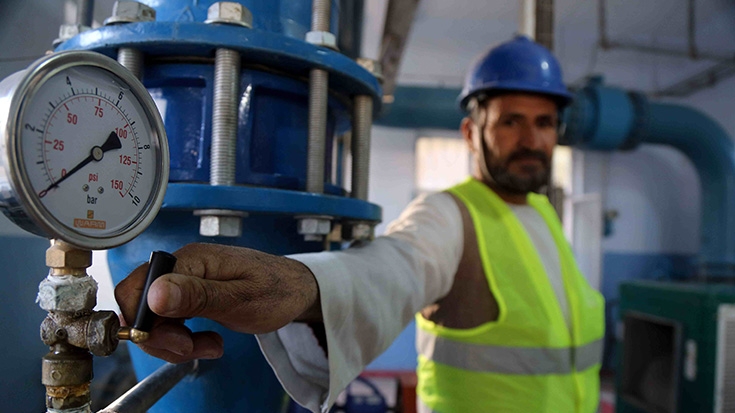Herat City, Herat Province – Twenty-year-old Nematullah stands along a creek as it snakes across almost the length of Buland Shahi community, a neighborhood in Herat City. The creek was the old source of drinking water for the neighborhood. Just 100 meters away, a big water tank, surrounded by walls, sits atop large iron pylons. This recently installed water tank is the new source of drinking water for the entire community.
Nematullah remembers the time when his family of 11 had to use water from the creek for drinking and other needs, including laundry. “We would stand in a line for water from the hand pump; it was very crowded and waiting would make us very tired,” he recalls. “Now we have water tap in our courtyard; we drink from this clean water and do not become ill. Water flows to all houses in our community.”
The Buland Shahi neighborhood, in Enjil district, is home to around 1,350 people in some 307 households. The project for clean drinking water was made possible by a government program, with financial assistance from the World Bank. Mansori, head of the Community Development Council in Enjil district, says: “The project of potable water cost about Afghani 2.3 million (about $45,000) and, in its implementation, the local residents also contributed Afghani 300,000 (about $6,000).”
According to engineer Hamidullah, head of the Directorate of Water Supply in Herat, more than 90 percent of residents in Herat Province currently have access to drinking water. “Three years ago we only had three hours of operations, now it is 24 hours. Back then we provided 8-10 million cubic meters of water, which has now reached 13 million cubic meters.”

